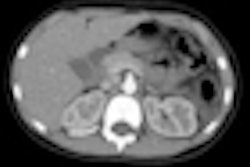At least two patients may have died due to a backlog in the interpretation of x-ray studies at several hospitals in Northern Ireland, according to a report issued this week by regional health authorities.
The report was commissioned following revelations of delays in the reporting of plain x-ray exams at Altnagelvin Area Hospital in Londonderry in the Western Health and Social Care Trust, and Craigavon Area Hospital in Craigavon in the Southern Health and Social Care Trust, both in Northern Ireland. News of the delays first came to light in February 2011 when newspaper reports indicated that some 18,500 x-rays at Altnagelvin alone may not have been reported in the 28-day period as required.
The reports prompted an investigation by the Regulation and Quality Improvement Authority (RQIA), Northern Ireland's health and social care regulator; the findings were released to the public on 2 May.
The report cites four cases in the Western Trust in which a reporting delay for x-ray studies led to a delayed diagnosis in the period of August 2009 to October 2010. Delays in reporting chest x-rays ranged from four months in one case to 8.5 months in another, with two cases of seven-month delays. In the case of the patient with the 8.5-month delay, there was a further three-month delay between when the case was reported and when the report was acted upon, delaying diagnosis by nearly a full year, according to the report.
With respect to the two patient deaths, RQIA investigators interviewed bereaved family members, who said they were contacted by general practitioners (GPs) after the trust had identified that there had been a delay. Even after diagnoses were made, both families said they felt they had experienced poor communication, and they did not appreciate the full extent of disease in the patients.
The delays at the Altnagelvin Hospital in the Western Trust were due to several factors, according to the report:
- A "major shortfall" in consultant radiologists, due to unfulfilled posts
- An increased volume of x-rays due to the implementation of the Northern Ireland PACS network, NIPACS, in the Northern Ireland region in 2010
- A general year-over-year increase in x-ray procedure volume
- The prioritization of other types of imaging studies, which had regional targets for reporting times, over plain-film x-rays
Similar problems occurred at the Southern Trust, including:
- A shortfall in radiologist staffing
- A growth in x-ray volume following the introduction of NIPACS in the Southern Trust
- A new policy to report on all hospital chest x-rays in response to concerns about patient safety; this increased the size of the backlog
Common problems at both trusts were difficulties in recruiting radiologists to fill vacant posts on either a locum or permanent basis. In addition, the adoption of CR and a digital PACS archive at both hospitals contributed to the problem by leading to a significant increase in the number of plain x-ray films that needed to be reported. This phenomenon is known to occur at facilities where digital imaging is adopted, the report stated.
The report noted both trusts took steps to address reporting delays, but hospital personnel also told the review team that the lack of a regional target for reporting x-rays, compared to other imaging modalities, had an impact on reporting priorities.
The RQIA report suggests 14 recommendations to enhance patient safety and improve communication with patients and families. These include:
- A regional escalation plan to support any trust that's unable to sustain reporting levels for plain x-rays
- A standard policy for reporting plain x-rays across Northern Ireland
- Regular audits for record handling systems
- The implementation of a regional system for collecting information on workforce issues in the trusts
- The dissemination by radiology departments of policies establishing which x-rays will be formally reported by radiologists
- The consideration of radiology services whenever extra funding for elective cases is allocated to trusts
- A review and standardization of procedures for informing patients about the results of x-rays that require follow-up
For a full copy of the report click here.

















